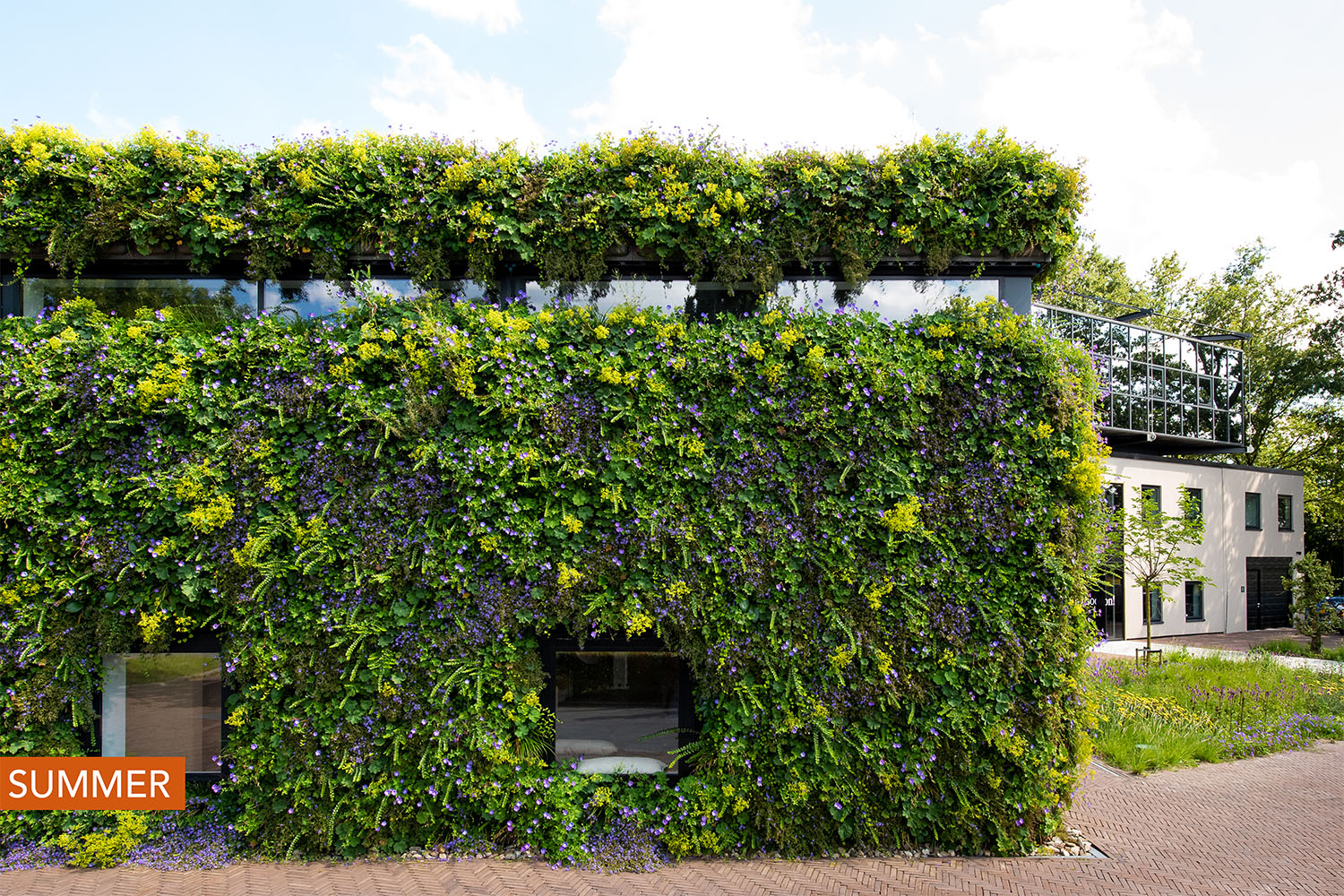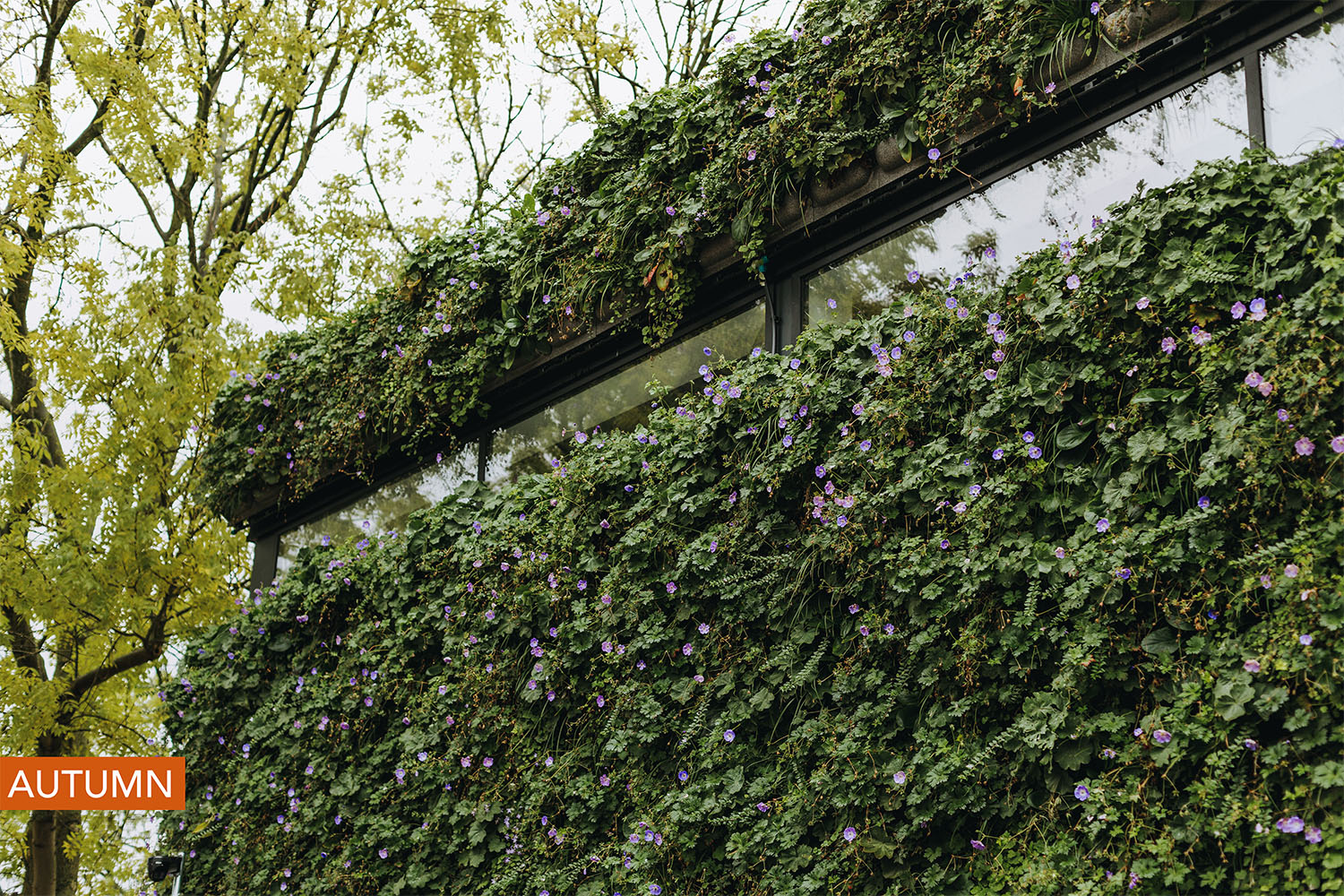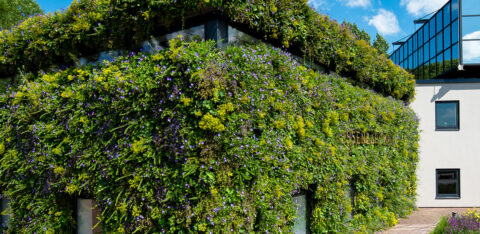The natural cycle of green facades and their seasonal change
14 February 2025Green facades bring nature, tranquility, and aesthetics to both exteriors and interiors. Just like a garden, a green facade changes with the seasons. In spring and summer, the greenery flourishes and grows abundantly, while in autumn and winter, nature enters a state of rest. This seasonal transformation adds value by highlighting the unique qualities of each season. This article explores why winter is a valuable season for green facades and how the charm of each season becomes visible.

The natural cycle of green facades
A green facade is not a static object but a living ecosystem. Like a garden or a forest, it adapts to the changing seasons. In summer, there is often an explosion of greenery and flowers, while autumn brings a more subdued color palette, and winter reveals more structure. Plants need this period of rest to prepare for new growth in spring.
This cycle creates a natural dynamic in the green facade. The changing seasons contribute to biodiversity and keep the vegetation healthy. The rest period in winter strengthens the plants, much like how trees shed their leaves to sprout anew in spring.
“A green facade lives with the seasons – that’s precisely what makes it so unique.”

The charm of winter: tranquility and structure
In winter, the focus shifts from color and bloom to tranquility and structure. While summer represents lush growth, winter offers a more subdued appearance, emphasizing lines, shapes, and patterns. The bare branches of some climbing plants reveal the structure of the facade, while evergreen plants retain their greenery.
This shift in appearance is not a loss but rather a different perspective on the beauty of nature. Winter brings a sense of calm to the streetscape and offers a serene view. Additionally, certain plants, such as Cotoneaster dammerii or Polypodium vulgare, maintain their color even during the colder months. With a thoughtful selection of plants, a green wall can remain visually appealing in every season.

Why a seasonal change has benefits
The winter appearance of a green facade offers more than just aesthetics. The natural cycle of growth, blooming, dying back, and regrowth has a positive effect on plant health. Plants that experience a period of “rest” in winter build up reserves for their spring growth surge, resulting in stronger, more resilient vegetation.
Another advantage is its impact on biodiversity. Various insects and birds make use of the shelter provided by the structure of a green facade during winter. The seasonal changes turn the green facade into a living habitat for diverse species.

What is there to see in winter?
Green facades change with the seasons. An ever-blooming facade simply does not exist—just like gardens, parks, and forests, they evolve throughout the year. This is not a flaw but a natural process.
What stands out in winter?
-
- Less foliage and flowers: Plants like Campanula poscharskyana Stella or Lonicera nitida Maigrun remain green, while deciduous species temporarily retreat.
- More visible structure: The underlying lines and shapes of the facade become more apparent.
- A dynamic appearance: What is at rest now is preparing to come back to life in spring.
By embracing the seasonal cycle, the natural beauty of each season becomes evident. For those who prefer year-round greenery, plant selection can be adjusted to include more evergreen species, such as Carex oshimensis Eversheen.

Inspiration from nature
A green facade reflects nature in all its facets. While summer symbolizes abundance, winter represents tranquility, simplicity, and structure. In a forest, it is natural for leaves to fall and trees to become bare—the same principle applies to green facades.
By embracing these natural processes, an authentic experience emerges. This not only provides a fresh perspective on integrating nature into the built environment but also highlights that sustainability and biodiversity are inherently linked to seasonal changes.



